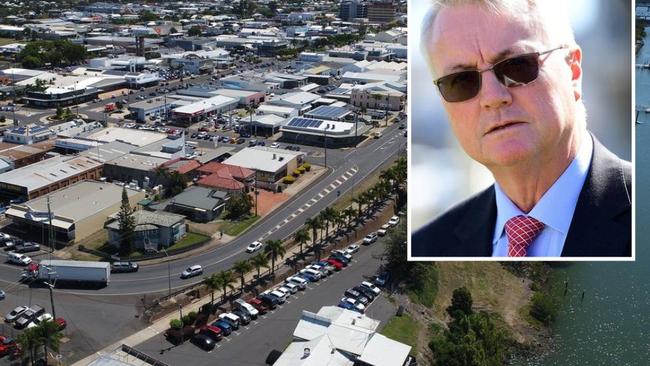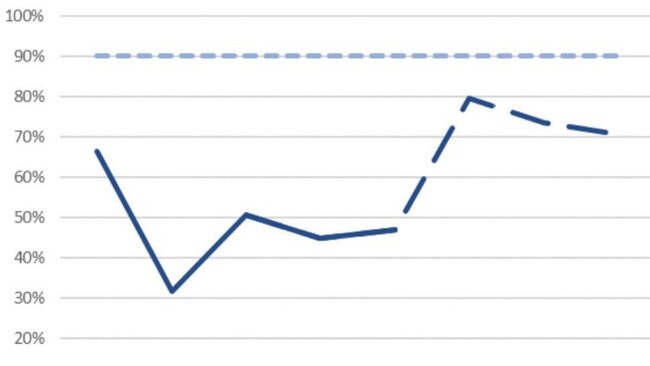State audit finds ‘significant deficiency’ with Bundaberg council
The Qld Audit Office’s latest review of council books marked Bundaberg down on two key aspects of its management of ratepayer funds. This is what they said and how the new mayor has responded:

Bundaberg
Don't miss out on the headlines from Bundaberg. Followed categories will be added to My News.
Bundaberg council has again fallen short of benchmarks for maintaining community assets according to a report released by the state government’s financial performance watchdog.
In its annual financial audit report released January 29, the Queensland audit office said Bundaberg council had an asset sustainability ratio of 54.8 per cent.
MORE NEWS: Watch: Heartwarming moment before Bundaberg champion’s NRL debut
Under state government benchmarks the asset sustainability ratio, a measure of the timeliness of a council in replacing old assets as they wear out, represents low risk when it is above 90 per cent.
Bundaberg council has a five-year average asset sustainability ratio of 45.96 per cent, the lowest among the 15 coastal councils in which it was grouped, meaning it is spending less than those other councils to maintain and renew its assets, including buildings and structures, roads, water and wastewater infrastructure and stormwater drainage.

In its 2023-24 financial report Bundaberg council stated that using depreciation (the reduction in value of an asset through wear as it is used) in the calculation of the asset sustainability ratio is unfair in cases where “a significant proportion of council’s assets are in good condition”.
“Using depreciation expense rather than renewal requirements as an indicator of replacement needs can disadvantage those councils with assets in better condition and falling below the ratio may indicate fewer replacement needs rather than a failure to fund all asset renewal requirements,” the report said.
Bundaberg council chief financial officer Simon Muggeridge said the assets referred to as being in “better condition” and thus unfairly penalised by the QAO criteria included assets restored following the 2010 and 2013 floods, and in more recent years the Gregory and Kalkie water treatment plants.

Bundaberg council’s 2022-23 financial report stated it spent $88.8million on property and infrastructure, the majority of which ($20.1million) was spent on roads, footpaths and bridges.
Spending on water infrastructure declined from a peak of $24.9million in 2019-20 to $5.4million in 2022-23.
Notwithstanding council’s claims that it was unfairly disadvantaged by the QAO’s method of calculating the asset sustainability ratio, its own 2021-22 financial report gave a target of around 80 per cent for 2023, meaning it fell short of its own target by 25 per cent.
Mr Muggeridge said challenges around acquiring materials and contractors to undertake asset maintenance and renewal projects were the reason for council missing its own forecasted target for 2023.
“Like many construction entities across Australia, council is competing for materials, contractors and project management to complete planned works,” he said.
“The shortfall is representative of the ongoing market challenges.”

Elsewhere in the report, the QAO noted Bundaberg council had a “significant deficiency” in its financial governance assessment of Queensland’s councils.
This deficiency refers to an issue found by government auditors around the way in which council was managing the rates masterfile, a database which details and tracks every applicable rate-in-the-dollar charged across Bundaberg properties.
QAO auditors found changes to the rates masterfile were not reviewed by anyone outside the revenue team within council.
In a December 2023 letter to the QAO from CEO Steve Johnston included in the report, Mr Johnston said council had addressed the issue soon after being informed of it by the QAO in May 2023, and asked that the deficiency be noted as resolved in the report.

QAO responded that while the issue was resolved before the finalisation of financial statements in October 2023, the fact that the issue had been in place for nearly 11 months of the 2022-23 financial year meant it needed to be included in the report.
While declining to go into the specifics of the QAO findings, mayor-elect Helen Blackburn said she would deliver on the need for improved transparency and accountability demanded by voters in the 2024 election.
MORE NEWS: Superhero medical garment changing young Queenslanders’ lives
“By and large the community has mandated for transparency and accountability through the number of new councillors and the new mayor sitting around the table,” Ms Blackburn said.
“That mandate will be delivered.”





